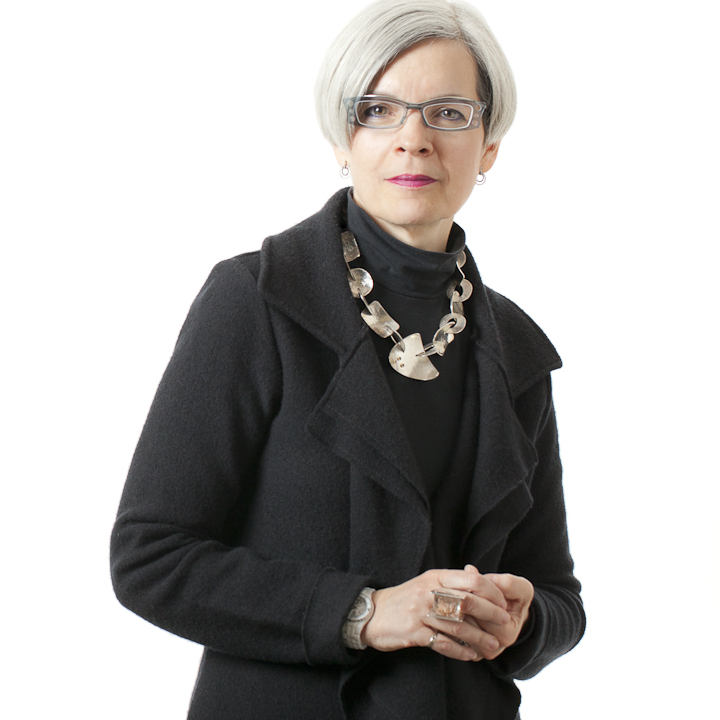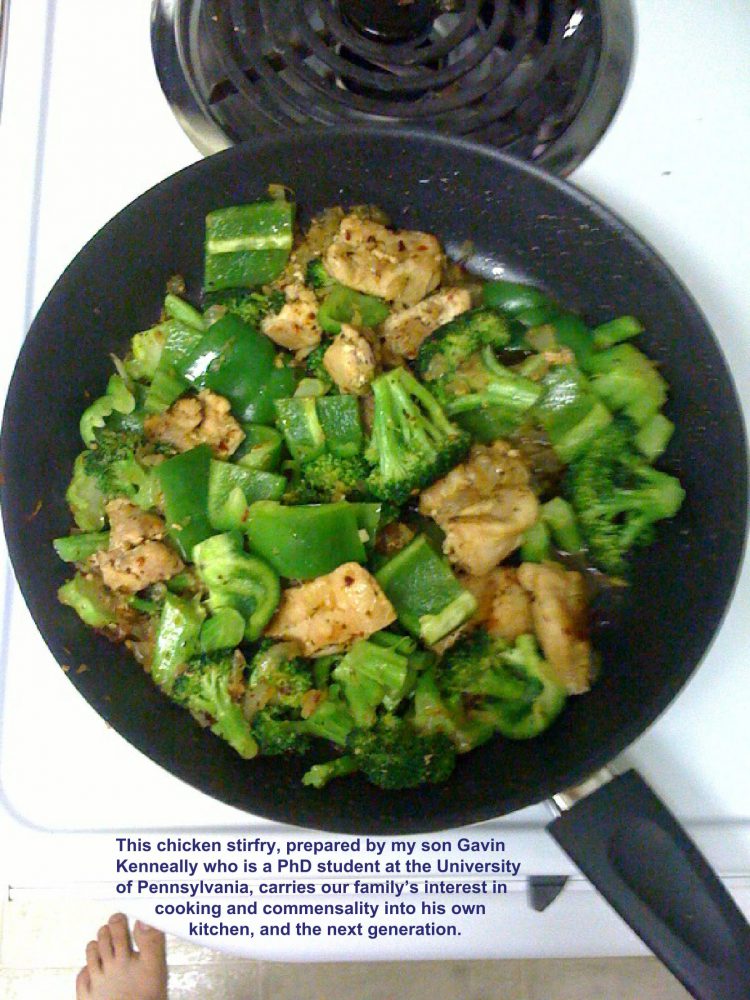
Rhona Richman Kenneally
Group member
Professor, Design and Computation Arts
Rhona Richman Kenneally is a Professor and former Chair of the Department of Design and Computation Arts at Concordia, and a Fellow of the School of Canadian Irish Studies. She is also Editor of the Canadian Journal of Irish Studies. She has degrees in literature and Canadian social history, as well as a professional degree and PhD in architecture. She is the organizer of the Food Studies Research Team under the umbrella of the Centre for Interdisciplinary Studies in Society and Culture, and is a participating faculty member in both the Irish Studies and Food Studies Research Currents of the Individualized MA and PhD programs (INDI, formerly known as SIP).
Rhona’s research brings together the domains of food studies, food design, sustainable design practice, and the architecture and design of the built environment, to explore food-related agency and performance. Her food-related lectures, publications, and teaching address several areas of investigation. Some explore the implications that remembered domestic “foodscapes” of one’s childhood have on subsequent food-related engagement, and have inspired design prototypes that implicate children more directly in daily home food practices. She has considered ways in which food has determined national and cultural affiliation in Canada and in Ireland. This work has also informed projects undertaken with her undergraduate and graduate students to engage with concepts of emotional, and “speculative” design to promote ethical and enriching food experiences. She is writing a book, based on her SSHRC-funded research, that explores the impact of new food-related technologies (such as electrification) in mid-20th-century Irish domestic space. In addition, she is co-editing, with Máirtín Mac Con Iomaire (School of Culinary Arts and Food Technology, Dublin Institute of Technology) a special issue on Food Studies of the Canadian Journal of Irish Studies. She has recently served as a keynote speaker or given lectures or conference presentations in Canada, Ireland, Italy, Spain, and the US.
Rhona has organized and co-organized food studies conferences and symposia at Concordia, including, with Jordan LeBel (Dept. of Marketing, Concordia; Director of the Luc Beauregard Centre of Excellence in Communications Research), Domestic Foodscapes: Towards Mindful Eating?. She has obtained funding from the Centre for Interdisciplinary Studies in Society and Culture for a series of workshops and lectures entitled Critical Food Studies, co-organized with Norma Joseph (Religion) and Alan Nash (Geography, Planning, and Environment). These will be held through the 2016-2017 academic year.

Her food-related publications include:
“The Elusive Landscape of History: Food and Empowerment in Sebastian Barry’s ‘Annie Dunne.’” In “Tickling the Palate”: Gastronomy in Irish Literature and Culture, edited by Máirtín Mac Con Iomaire and Eamon Maher, 79–98. New York, NY: Peter Lang International Academic Publishers, 2014.
“Tastes of Home in Mid-Twentieth-Century Ireland: Food, Design, and the Refrigerator.” Food and Foodways 23 (2015): 1–24.
“Towards a New Domestic Architecture: Homes, Kitchens and Food in Rural Ireland during the Long 1950s.” In Food and Drink in Ireland, edited by Elizabeth FitzPatrick and James Kelly, 325–47. Royal Irish Academy, 2015. http://www.jstor.org/stable/10.3318/priac.2015.115.12.
“Memory as Food Performance: The Cookbooks of Maura Laverty.” In Ireland and Quebec: Multidisciplinary Perspectives on History, Culture and Society, edited by Michael Kenneally and Margaret Kelleher, 166–82. Dublin: Four Courts Press, 2016.
“Maura Laverty: Ireland’s First Celebrity Chef Still Dishes up Food for Thought.” The Irish Times, August 31, 2016. http://www.irishtimes.com/culture/books/maura-laverty-ireland-s-first-celebrity-chef-still-dishes-up-food-for-thought-1.2774422.
The following is a recipe from Rhona, for a vegetarian dish that can be served either as a main course or as a side dish.
Potatoes Duncan:
This is a recipe that features fall and winter vegetables, which we treat as year-round staples. It is great on its own as a vegetarian dish, or as an accompaniment to meat, chicken, or fish that has a robust flavour, for example cod. The recipe was conceived to serve four as a side dish, or two as a main course. Read through the recipe ahead of time, so you have a sense of what it’s asking you to do. And remember to keep the potato and carrot peelings for the compost bin!
The recipe’s ingredients include smoked paprika, which is worth trying if you enjoy barbeque-ish rich smokiness. Smoked paprika is featured in Spanish cuisine and is available in both “sweet” and “hot” (which is indeed quite hot) varieties. It is generally easy to find in a spice store or international food store. A little goes a long way, so less is more until you determine how much you like. Use it in other dishes by rubbing it into the skin of a chicken along with salt and pepper before roasting, or in paella if you’re feeling experimental. There are other recipes online that will inspire you. By the way, you can leave the smoked paprika out of the recipe and it will still taste good.
The recipe calls for a sturdy metal baking sheet or roasting pan, around 12 x 15 inches, with short sides (half an inch to an inch high, give or take; high enough to hold the mixture but not so high that it won’t crisp properly).
Ingredients:
- 4 medium-sized potatoes
- 1 small onion, about a 3-inch diameter
- 3 carrots
- 1 small clove garlic, chopped (leave out if you don’t have it)
- 1 teaspoon salt
- pepper to taste
- 3/4 of a teaspoon smoked paprika, sweet or hot or a mixture of both, or to taste
- 2 tablespoons olive oil, plus about another tablespoon drizzled over the potatoes as indicated below
Method:
- Adjust your oven rack so that it is about halfway between the top and bottom of the oven. Preheat the oven to 400 degrees Fahrenheit.
- Spread 2 tablespoons of olive oil evenly over the baking sheet.
- Peel potatoes and grate them using a box grater. Be careful not to grate your fingers!
- Peel carrots and grate them on the box grater.
- Prepare the onion. Peel it, and cut it in half along the equator. Starting with the first onion half, place its flat side down on the cutting board. Keeping the fingers of the hand holding the onion, well out of the way of the knife, begin cutting as thin as possible (1/8 inch) parallel slices across the onion’s hemisphere from one edge to the other (when you get close to the second edge, rotate the uncut remainder so the largest flat surface is touching the cutting board—that will help stabilize things so you can continue to cut thin slices). Repeat with the other onion half. Separate the layers of onions with your fingers so you have thin curved strips.
- Mix together the potatoes, carrots, onions, garlic, salt and pepper in a bowl. Let sit for 5 minutes. Then, a handful at a time, squeeze the mix between the palms of your hands, over another bowl, to eliminate as much moisture as possible. Pretend you are making a snowball, squeezing so that it’s as dense as possible. Save any liquid that drips into the bowl, to use to make soup.
- Evenly distribute the squeezed-out mixture over a clean cotton or linen tea-towel (or unbleached paper towel if you must; can be composted afterward), and try to remove as much remaining moisture as possible by dabbing or rolling. Be careful not to shred the paper towel into the potato mixture if you’re using paper. Gently gather and pile the potato mixture into a mound so you’re ready for the next step.
- When the oven reaches 400 degrees, spread the mixture evenly over the baking sheet, pressing down a bit but leaving the mixture quite loose. The thinner you spread it, the crispier it will be. Sprinkle the paprika evenly over the top, and then, placing your thumb to partly cover the opening of the bottle of olive oil (to restrict the flow to a trickle), wave the bottle over the potato mixture from one end to the other, to scatter about a tablespoon of oil evenly over it.
- Place in oven and bake. The goal is to have the top crispy and brown, and the potatoes and carrots cooked through. The thinner the layer, the faster it will cook. Start checking after about 10 minutes, but it will more likely take 15-20 minutes until the dish is ready.

